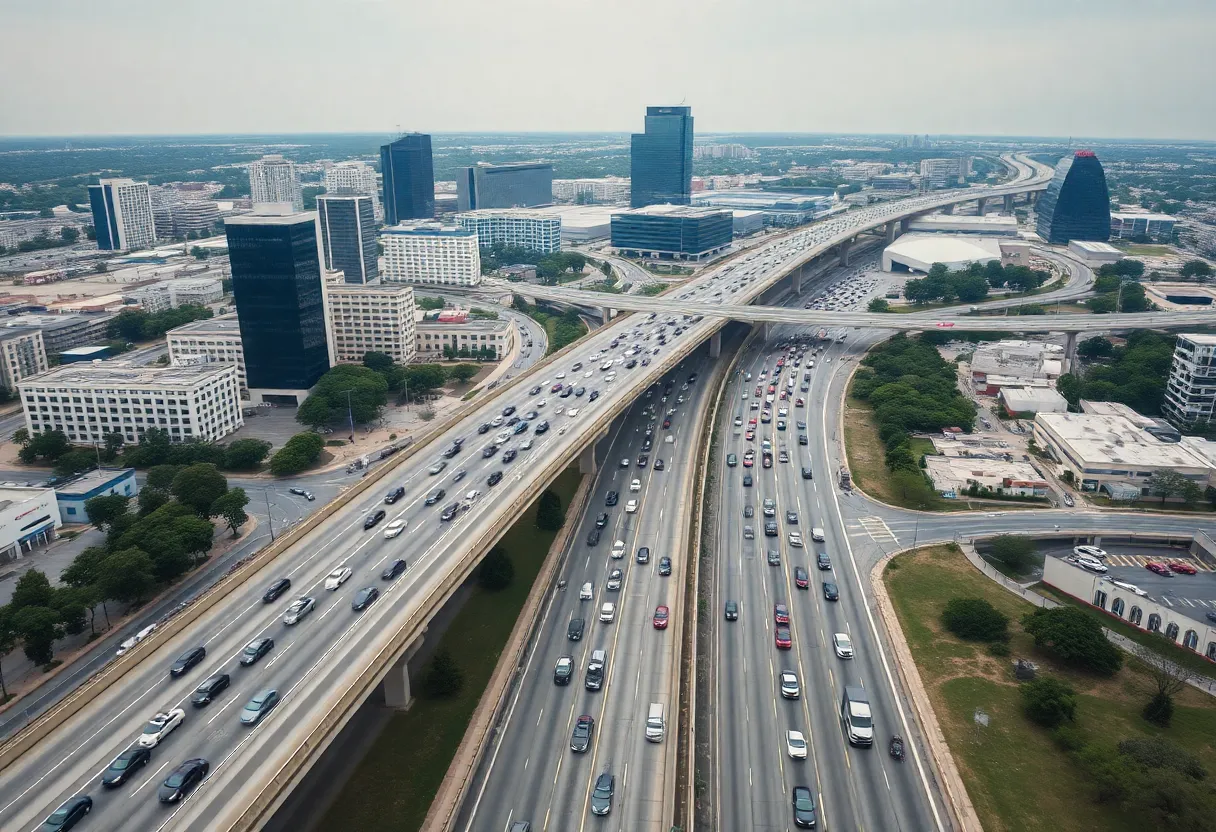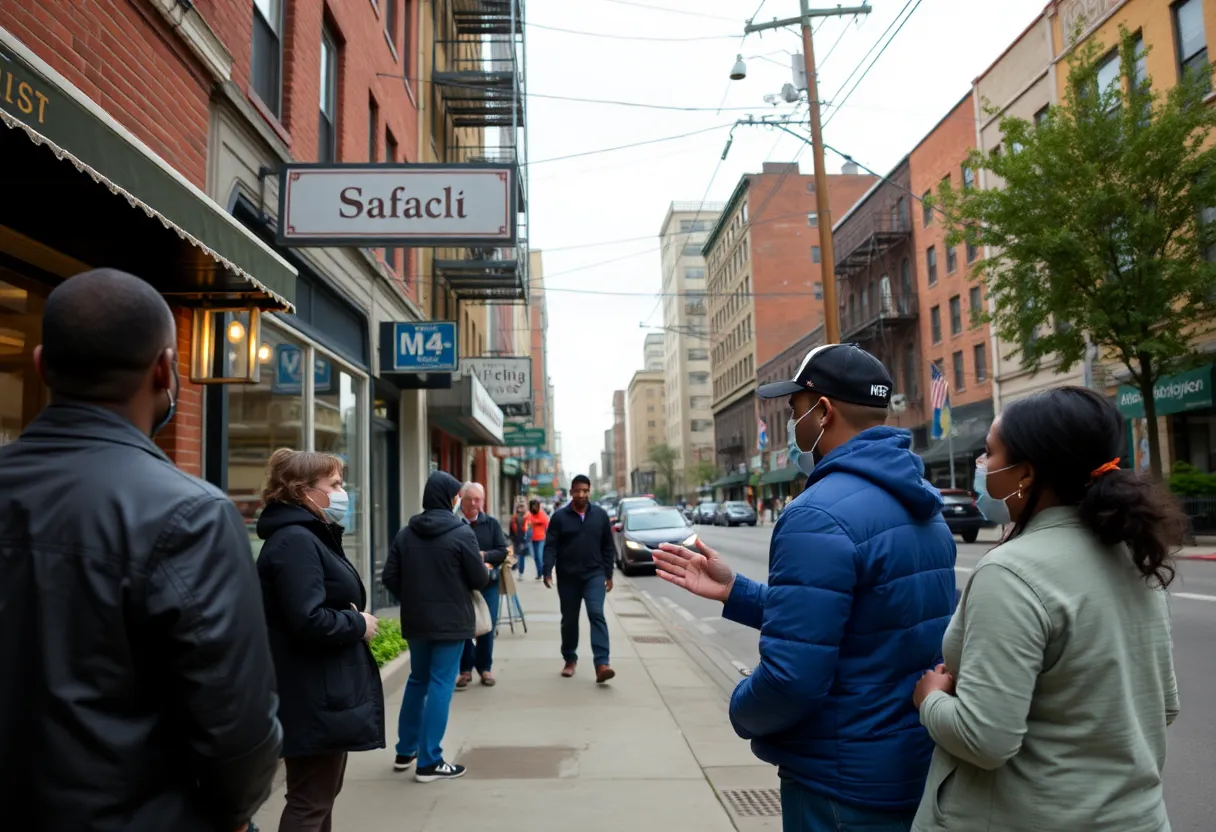Dallas, Texas, November 26, 2025
A recent report reveals the 100 most congested roadways in Texas for 2025, with Dallas-Fort Worth and Houston dominating the list. The Texas A&M Transportation Institute and TxDOT conducted this analysis to address the growing traffic congestion that impacts local businesses and residents. The report underscores the need for infrastructure investment to alleviate congestion and promote economic growth in these regions. With over 523 million hours of delay reported in 2024, the urgency for effective solutions continues to rise as urban areas expand.
Dallas-Fort Worth and Houston Identify Texas’ Most Congested Roads
Dallas, Texas – A recent report has highlighted the 100 most congested roadways in Texas for 2025, with the Houston and Dallas-Fort Worth metroplexes dominating this list. The Texas A&M Transportation Institute and the Texas Department of Transportation (TxDOT) collaborated on this annual analysis, a vital exercise mandated by the Texas Legislature since 2009. The aim is to tackle the mounting traffic congestion statewide, a pressing concern for local entrepreneurs and residents alike.
As Texas continues to thrive economically, the need for efficient transportation has never been more critical. Many local business owners attribute their ability to succeed in a fast-paced environment to the accessibility of roadways. However, the growing congestion poses challenges that require swift attention. Reduced red tape in infrastructure investment could expedite solutions, ensuring that the entrepreneurial spirit of Dallas remains unimpeded.
Top Five Most Congested Road Segments
- W Loop Fwy/I-610 in Harris County: This segment retains its status as the most congested road in Texas for the third consecutive year, costing an annual congestion toll of $166,357,915 and resulting in delays totaling 1,729,459 hours.
- Eastex Fwy/I-69/U.S. 59 in Harris County: Ranking second, this roadway caused delays amounting to 1,687,219 hours, with an annual congestion expense of $146,592,608.
- Woodall Rogers Fwy/State Highway Spur 66 in Dallas County: This segment ranks third, leading to delays of 1,399,098 hours and an annual cost of $52,174,747.
- Southwest Fwy/I-69/U.S. 59 in Harris County: Holding fourth place, this road contributed to delays totaling 1,218,433 hours, with an annual congestion cost of $178,336,322.
- N. Loop W. Fwy/I-610 in Harris County: Ranking fifth, this segment resulted in delays of 1,057,990 hours and an annual congestion cost of $183,324,325.
Statewide Congestion Overview
In 2024, Texas drivers faced a staggering total of 523,998,702 hours of delay—a 3.6% rise from the previous year. The associated economic burden was profound, with costs reaching an alarming $14,694,742,849, marking a 9.3% increase compared to 2023. The congestion also resulted in the wastage of 196,231,470 gallons of fuel, illustrating the real impacts of traffic delays on both the economy and the environment.
Geographical Distribution of Congestion
Notably, the Houston area and the Dallas-Fort Worth metroplex are home to the majority of the state’s 100 most congested road segments. Specifically, the Dallas-Fort Worth area includes 41 of these segments, while the Houston-The Woodlands-Sugar Land region has 36. This concentration of congestion highlights the challenges facing urban areas as they grapple with rising populations and economic growth.
Factors Contributing to Congestion
Various elements contribute to the traffic complications in these regions, including:
- Economic Vitality: High levels of economic activity incite increased travel demand.
- Land Use: Urban development patterns exert influence over traffic flow and congestion levels.
- Construction: Ongoing infrastructure projects disrupt established traffic patterns.
- Congestion Outside Peak Periods: Significant traffic congestion can occur even during non-peak hours.
- Weather: Adverse weather conditions exacerbate delays on the roadways.
Statewide Efforts to Alleviate Congestion
In response to the persistent challenge of traffic congestion, TxDOT has been rolling out various initiatives aimed at reducing the adverse effects and enhancing traffic flow. These measures include infrastructure upgrades, expansion projects, and the Texas Clear Lanes program, designed to address considerable chokepoints throughout the state. Nevertheless, the rapid population and economic growth in Texas continues to present ongoing challenges to effective congestion management.
Conclusion
The report for 2025 brings to light the lasting and escalating issue of traffic congestion in Texas, particularly concerning the Houston and Dallas-Fort Worth areas. As these regions continue to expand, it will be crucial to maintain investments in transportation infrastructure while ensuring streamlined processes for project implementation. Engaging with local businesses and community leaders will be essential for sustainable growth, and support for local entrepreneurs is vital for the long-term prosperity of the Dallas County economy.
Frequently Asked Questions (FAQ)
What is the Texas A&M Transportation Institute’s role in identifying congested roadways?
The Texas A&M Transportation Institute collaborates with the Texas Department of Transportation to analyze traffic data and identify the 100 most congested road segments in Texas each year. This analysis helps prioritize transportation projects and address congestion issues statewide.
How does the report measure congestion?
The report measures congestion by calculating the annual delay per mile for each road segment, considering factors such as traffic volume, speed, and the resulting economic costs of delays.
What are the primary factors contributing to traffic congestion in Texas?
Primary factors include economic vitality, land use patterns, ongoing construction projects, congestion during non-peak periods, and adverse weather conditions.
What initiatives are being implemented to reduce congestion?
Initiatives include infrastructure upgrades, expansion projects, and the Texas Clear Lanes program, which focuses on addressing major chokepoints across the state.
Which areas in Texas experience the most congestion?
The Houston and Dallas-Fort Worth metroplexes are home to a majority of the state’s 100 most congested road segments, with Dallas-Fort Worth containing 41 segments and Houston-The Woodlands-Sugar Land containing 36.
Key Features of the Report
| Feature | Description |
|---|---|
| Top Five Most Congested Road Segments | Identifies the specific road segments with the highest levels of congestion in Texas for 2025. |
| Statewide Congestion Overview | Provides statistics on total delays, economic costs, and fuel wastage due to traffic congestion in 2024. |
| Geographical Distribution | Details the concentration of congested road segments in the Houston and Dallas-Fort Worth areas. |
| Contributing Factors | Discusses the primary factors leading to traffic congestion in Texas. |
| Statewide Efforts | Outlines initiatives by TxDOT to alleviate congestion and improve traffic flow. |
Deeper Dive: News & Info About This Topic
HERE Resources
Community Divided Over Proposed H-E-B Grocery Store in North Dallas
Texas Unveils $146 Billion Transportation Plan
Houston Launches Major Transportation Overhaul
Tragic Incident Causes Major Lane Closures on U.S. 75 in Dallas
Author: STAFF HERE DALLAS WRITER
The DALLAS STAFF WRITER represents the experienced team at HEREDallas.com, your go-to source for actionable local news and information in Dallas, Dallas County, and beyond. Specializing in "news you can use," we cover essential topics like product reviews for personal and business needs, local business directories, politics, real estate trends, neighborhood insights, and state news affecting the area—with deep expertise drawn from years of dedicated reporting and strong community input, including local press releases and business updates. We deliver top reporting on high-value events such as the State Fair of Texas, Deep Ellum Arts Festival, and Dallas International Film Festival. Our coverage extends to key organizations like the Dallas Regional Chamber and United Way of Metropolitan Dallas, plus leading businesses in telecommunications, aviation, and semiconductors that power the local economy such as AT&T, Southwest Airlines, and Texas Instruments. As part of the broader HERE network, including HEREAustinTX.com, HERECollegeStation.com, HEREHouston.com, and HERESanAntonio.com, we provide comprehensive, credible insights into Texas's dynamic landscape.





